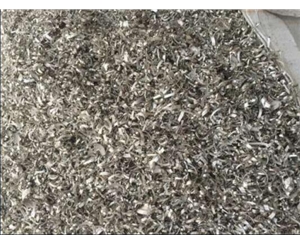In the process of oil and gas extraction, to ensure that the oil and gas layer is fractured but not closed, proppant fracturing fluid with ceramic support agent needs to be injected, which directly affects the extraction process. Magnesia slag can replace chromium trioxide, titanium dioxide and other additives to obtain high-strength ceramic support agents and significantly reduce sintering temperature and fuel consumption. However, research on the optimum sintering temperature of magnesia slag ceramic support agents is scarce. The ceramic particles were made using Shanxi Yangquan bauxite, coal gangue and magnesia slag as additives.
With the increase of sintering temperature, the white charcoal disappears at 1200℃ and becomes mullite, and corundum continues to transform into mullite. With the increase of temperature, the mullite crystal nucleus develops into a well-shaped short needle, with irregular pores, and the timely crystal is a low-density particle; needle-shaped mullite is slender and interwoven into a network, with obvious reduction of gas pores; mullite crystals grow into rod shapes with liquid phase. The liquid phase comes from the melting of low-melting-point oxides in magnesia slag, and the liquid fills the pores to make the structure more compact. When the temperature continues to rise, the rod-shaped mullite continues to grow, and due to the formation of more liquid phases, the mullite grows thicker and longer, promoting the abnormal growth of mullite. As you may have interest, we also provide magnesium metal block.

Magnesia Slag Recycling
The fracturing rate of the ceramic proppant is 6.87% and 8.64%, and the optimal sintering temperature is 1250℃. The ceramic particles have good properties and high sintering density. Adding magnesia slag can improve the mechanical properties of the ceramic support agent, reduce pollution to the environment, and improve the economic benefits of the enterprise.
As a magnesium alloy manufacturer, we notice that the main phases of magnesia reduction slag, calcium carbide slag and fly ash are silica dioxide, calcium oxide and aluminum oxide. Magnesia slag can be added as a pore-forming agent (graphite, coal powder or dolomite) and natural mineral additives to prepare high-performance porous ceramic filtering balls with three-dimensional connectivity, acid and alkali resistance, high temperature resistance and high opening rate, mainly used in industrial wastewater and waste gas treatment or the biomedical field. The performance of porous ceramics is influenced by the content and type of pore-forming agent.
After the addition of magnesium slag recovery, the porosity rate is adjusted and the acid-base resistance is improved. As the addition amount increases, the burn loss, porosity rate, and water absorption rate increase, but the strength decreases linearly. The cross-sectional shape of porous ceramics is also affected by the addition of different additives. When 30% bentonite is added, the cross-section is smooth with few pores. When 30% kaolin is added, the fracture surface is loose and porous and exists in the form of petal crystals. Tian Lei used magnesium slag-loaded porous ceramic filter balls to remove arsenic from water. When the pH of the solution is 2, the adsorption time is 4 hours, and 20 g/L of porous filter balls are added, the arsenic adsorption rate reaches 95.96%.